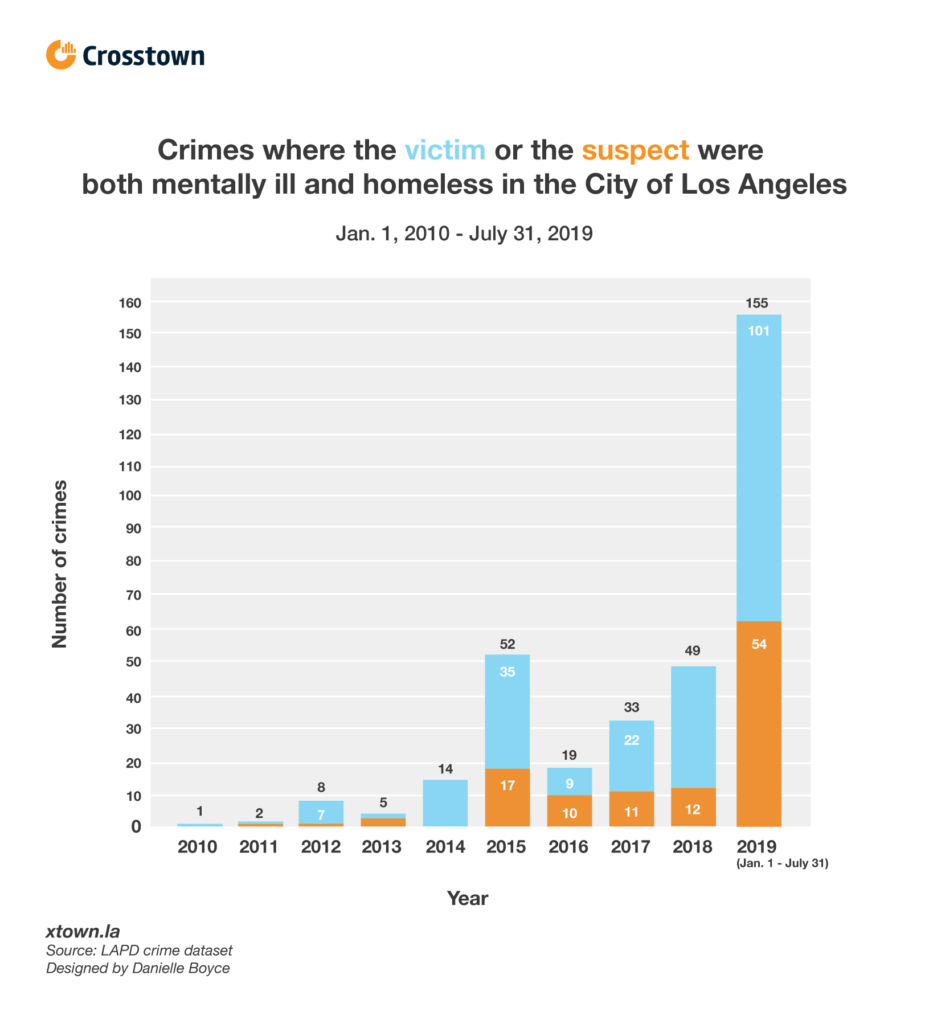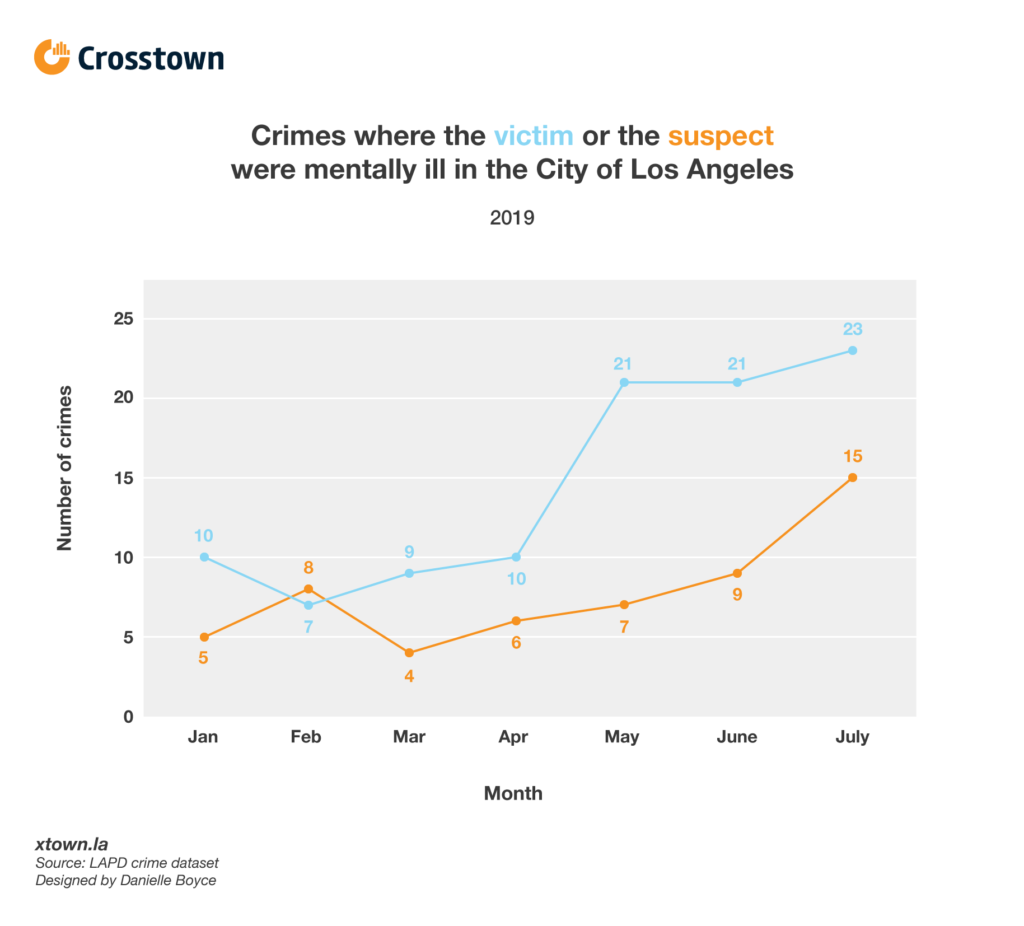How homelessness, mental illness and crime converge

Crimes involving mental illness and homelessness are skyrocketing in LAPD publicly available data. The same is true of people who are experiencing both mental illness and homelessness.
The first seven months of 2019 saw more crimes involving that group than any year on record in the LAPD data, which dates back to Jan. 1, 2010.
Over 36,100 people living in the City of Los Angeles are currently experiencing homelessness, a 16% rise from last year, according to the 2019 Greater Los Angeles Homeless Count.
Twenty-seven percent of the city’s homeless population suffers from serious mental health disorders, according to the 2019 count, a 12% increase from 2018.
Our analysis of LAPD data of crimes involving homeless people who are also mentally ill reveals a crime count that is generally on the rise. The entire year of 2010 saw just one crime involving homeless and mentally ill people. In contrast, the first seven months of 2019 saw 155 incidents.

For the first seven months of this year, there were 101 reports of crimes with victims experiencing both homelessness and mental illness. There were 54 incidents involving suspects who were both homeless and mentally ill. Combining victims and suspects, this is a 355% increase from the first seven months of 2018, which saw 24 crimes with homeless and mentally ill victims and 10 homeless and mentally ill suspects.

While the LAPD does give their officers a 40-hour training session on how to engage with mentally ill people at the scene of a crime, the officers have to address the crimes before the suspect’s circumstances.
“We would not make a differentiation based upon those factors [mental illness and homelessness] in isolation,” said Lt. Brian Bixler, who heads the LAPD’s Crisis Response Unit. “Our department policy is that criminal matters take precedence. If booking is required, and the subject is placed with LA County Jail, mental health treatment will be provided by LA County Jail mental health.”
Lt. Bixler cited LAPD Manual Section 4/260.20 in his statement, which says the following:
“When a person is taken into custody for a criminal offense and the person is suspected of having a mental illness, the Mental Evaluation Unit (MEU) shall be contacted prior to the person being booked. When a subject is a suspect in a felony or high-grade misdemeanor crime, or has a felony or high-grade misdemeanor warrant, the criminal matters shall take precedence.”
How we did it: We examined LAPD publicly available data on reports of crimes involving individuals experiencing homelessness and mental illness for the first seven months of 2019. For neighborhood boundaries, we rely on the borders defined by the Los Angeles Times. Learn more about our data here.
LAPD data only reflect crimes that are reported to the department, not how many crimes actually occurred. In making our calculations, we rely on the data the LAPD makes publicly available. On occasion, LAPD may update past crime reports with new information, or recategorize past reports. Those revised reports do not always automatically become part of the public database.
Want to know how your neighborhood fares? Or simply just interested in our data? Email us at askus@xtown.la.






